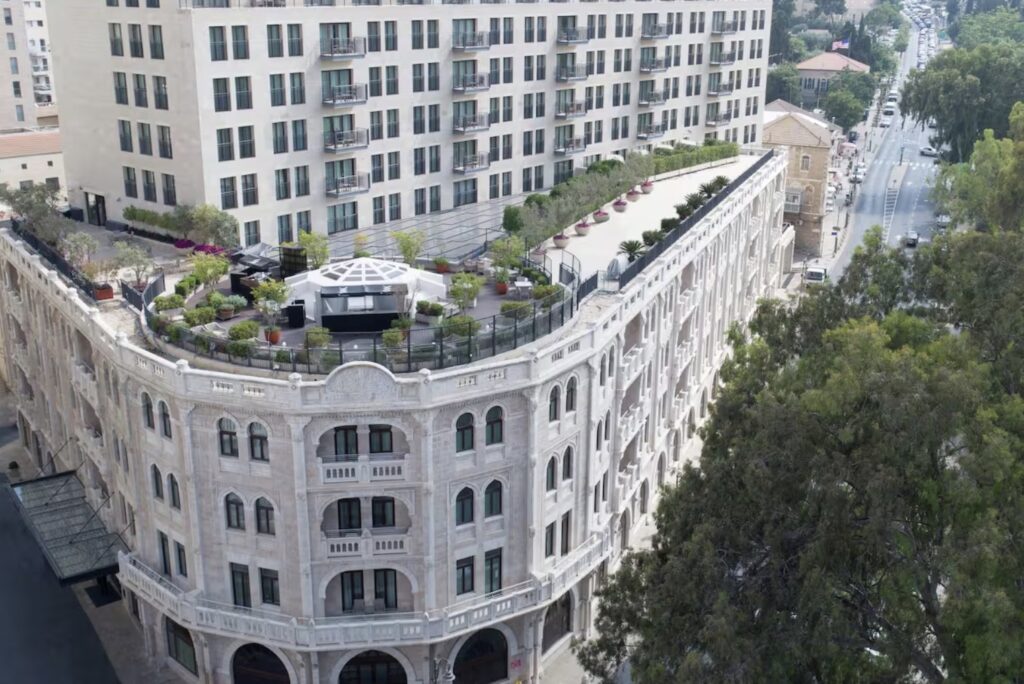
Israel is an incredibly unique country in so many ways. Not only do three of the world’s major religions converge there, with their respective holy sites physically coexisting in ways that have thus far evaded its human inhabitants, but there are also many more remnants of grandiose civilizations that pre-date even most religions. Needless to say, Israel generally – and Jerusalem specifically – is a top bucket list destination for literally billions of people. But another unique aspect of Israel that sometimes frustrates travelers to this diverse destination is the lack of diversity in internationally branded hotel offerings.

The availability of true luxury hotels that are up to European and North American standards are hard to come by in Israel, and travelers should interpret the star ratings in a more regional context. With that said, it is not impossible to find and enjoy Western-standard luxury hotels in Israel, but there are really only three hotels in Jerusalem that fit the bill of being what most international tourists expect when they think of luxury accommodations.

Part of this hotel served as the British military headquarters during the Mandate period, which led to it being bombed in the summer of 1946 by Jewish forces opposed to British rule over the territory. After Israel declared its independence in 1948, the hotel found itself on the front line of the new [then] border between Israel and Jordan. Today, however, the King David Hotel is a calm oasis amid the hustle and bustle of a geographically united Jerusalem.
Arguably Israel’s nicest hotel and certainly Jerusalem’s most posh is the brand new Waldorf Astoria, also located adjacent to the Old City. I first noticed this new property nearing completion two springs ago when I visited Jerusalem. This past spring when I visited again, I finally had the chance to stay there and try it out, and it certainly did not disappoint. While some rooftop areas as well as the below-ground swimming pool were still under construction at the time, the rest of this fabulous new hotel was open for business and already bustling with both Israeli and international guests.

The Waldorf Astoria Jerusalem was born out of a much older luxury hotel, the Palace Hotel that opened its doors in 1930. However, the Palace’s reign would be short lived. It closed in 1935 amid political scandal, legal battles, and competition from the newly opened King David Hotel nearby. Of the original property, only one elaborate facade remains and is incorporated beautifully into the modern Waldorf Astoria Jerusalem.
The interior of the Waldorf proudly offers the chic glamor and luxury that you would expect from such a world renowned brand. The lobby has soaring multi-story glass ceilings, two restaurants, extravagant chandeliers and other hanging art, such as the glass doves suspended in the middle of the staircase to the lower levels. The rooms, of which there are 226, are quite spacious and no detail is spared in making them as posh as possible without having them look or feel overdone.

While the Waldorf Astoria Jerusalem looks rather moderately sized from the outside, what really surprised me about the hotel was the scale of the enormous ballroom on the lower/underground levels. This will surely become a go-to place for conferences, weddings, and myriad other meetings and ceremonies for guests from all over the world, and with the upcoming completion of the rooftop spaces and below-ground pool it’s only going to keep getting better.
Last but not least is the fabulously chic and boutique Mamilla Hotel, a cozy neighbor of both the Waldorf Astoria and the King David near the Old City. The hotel is the anchor of the larger Mamilla commercial development (i.e., upscale shopping mall) that stretches from the hotel’s back doors all the way to Jaffa Gate to the Old City.

The team behind the Mamilla went all in on design, and that attention to artistic detail shows in every nook and corner of the hotel. It is also reflected in the rooms themselves, which are average in size but outsized in elegant ambiance. A stay at the Mamilla also gives you access to the wonderful gym and spa just across a small skybridge, and making time to try this facility out is a must. Another must at the Mamilla is the rooftop bar and restaurant, which offers great views of the Old City.

What really impresses me most about both the Waldorf Astoria and the Mamilla is the fact that both hotels have gone to great lengths to showcase their host city’s ancient heritage. Neither property feels at all like some modern monstrosity has invaded an historic city. Instead, they both are proving to be crucial partners in preserving and revitalizing their neighborhood’s historic character after decades of neglect as part of the no man’s land between Israel and Jordan, East and West Jerusalem, and later the older and newer areas of the city.
These luxurious hotel properties have served as an unwitting gateway between sensitive divisions of the city in their past and more modern iterations. But now they serve as a welcoming host and a peaceful gateway to all of Jerusalem for visitors from around Israel and around the world.